While the essays I am working on for Substack are taking more time to be reader-ready, I’m sharing Part Two of my April in the Sandhills photo gallery. If you’d prefer to read more writing about the Fall Line Sandhills, here’s a link to all posts tagged “sandhills.” If you’d like to visit these sandhills with a knowledgeable guide, the Georgia Botanical Society has a free field trip scheduled for October 4, 2025 at 10am.
This photo gallery begins with grasshoppers, which are both abundant and diverse in the Sandhills. Sit and watch on the ground, and you will see many, who, at first, blend in with the sand, but on closer look, are a marbled pattern of sandhills shades, sometimes brightened by a patch of color. This grasshopper, for example, is mostly the same beige as the sand of Sandhills West WMA, but see that little bit of yellow? I believe this is a sulphur-winged grasshopper, Arphia sulphurea.
Similarly, the orange-winged grasshopper, Pardolophora phoenicoptera, blends in well with its beige environment — both sand and leaf litter — but for a few bits of brilliance. Tangerine orange and cerulean blue stripe the grasshopper’s legs, and that same blue encircles the base of the grasshopper’s head.
And finally, the flashiest of the grasshoppers — a riot of patterns and shapes that paradoxically help it blend in to its environment, whether that be a sandhills bog or my front garden — the American bird grasshopper, Schistocerca americana, shown below attempting to blend in with a thin branch. Aptly named, bird grasshoppers in flight are as big as birds. They startle easily in both senses of the word. I will not even be aware of a bird grasshopper camouflaged by leaves, until my presence frightens the grasshopper into flight, and my heart jumps in my chest as a large thing suddenly flies towards me, chitinous body clacking.
The sandhills host not only a variety of orthopterans1 but also odonates.2 If warblers are the jewels of springtime woodlands, I think dragonflies and damselflies are the jewels of the April bog. Below are two favorites — the black-and-yellow-striped Bella skimmer with black-spangled wings, and the shimmering ruby red Carolina saddlebags, photographed clinging to a thin branch, taking a rest from patrolling the fields near Fox Run Road.
In the springtime bogs, six-spotted fishing spiders rest on leaves that float on the surface of the dark water, presumably lying in wait for prey. These mostly brown spiders would blend in with the brown of bog mud and water, but for the bright white bands and yellow dots adorning their backs.
Switching to plants, a new-to-me species encountered this April was the rare Miller’s witchalder, Fothergilla milleri, a relative of witch hazel, brightening the darkness of shady bogs with its white bottlebrush blooms.
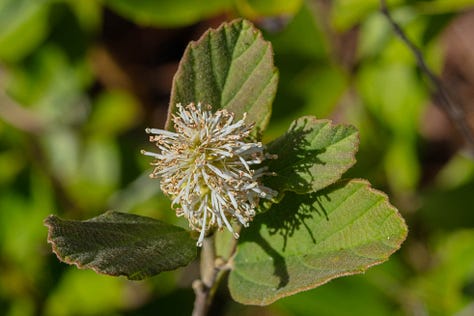
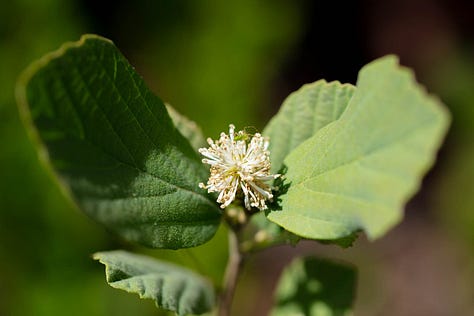
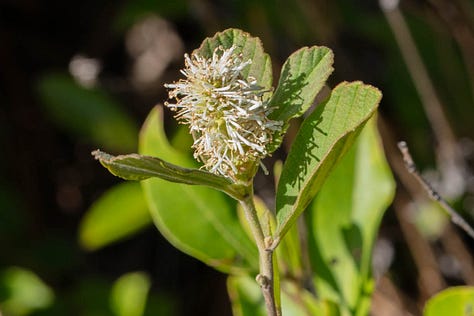
Amsonia too, was present, its domes of flowers like star-shaped pieces of sky fallen to earth.
This April, our field trip group found a field of starry blue amsonia mixed with the bright yellow of aptly named squareheads. Just look at the unusual, square-shaped faces of these daisy relatives.
I close today’s gallery post with another daisy relative — soft green-eyes, Berlandiera pumila. The genus Berlandiera is a relative of the more well-known Silphium, and like Silphium, the phyllaries (special leaves that support the flower head) overlap in a way that reminds me of the petals of a rose. Take a peek under the sunflower-like inflorescence and see the phyllaries, like a green rose holding up the sunny yellow flower head.3

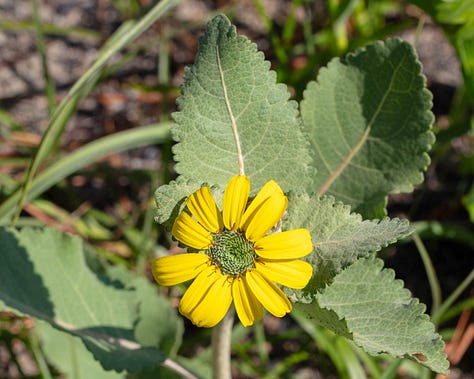
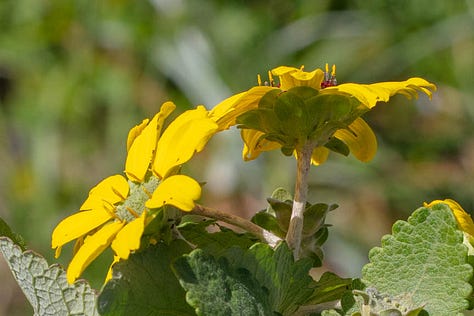
I hope you’ve enjoyed today’s gallery post mixed with nature facts and terminology. Next week may bring one of the essays I’ve been working on, or another gallery. Only time will tell.
Visiting these sandhills, on Wildlife Management Area land, requires some kind of permit — a fishing license (the cheapest option, $15), hunting license, or a Lands Pass. These permits grant access to all Georgia WMAs for a full year. What a deal!
Previous Installments of the Sandhills Series
Order Orthoptera includes grasshoppers, katydids, and crickets. They undergo incomplete metamorphosis (molting through various nymph stages to adult, with no pupa stage), many make music, and many have saltatorial legs — legs evolved for jumping.
Order Odonata includes dragonflies and damselflies. They also undergo incomplete metamorphosis, though their nymphs are aquatic. In college, I was told that Odonata means “tooth wing,” though I have no idea why.
Berlandiera and Silphium are in the family Asteraceae. As described in this boneset post, flowers in this family are arranged in composite heads of many, many flowers — typically sterile ray flowers (which are what we think of as the “petals” of daisies, sunflowers, and other Asteraceae) and fertile disc flowers (the less showy flowers in the center of the flower head.) Squareheads is also in this family, as are daisies, sunflowers, and dandelions.



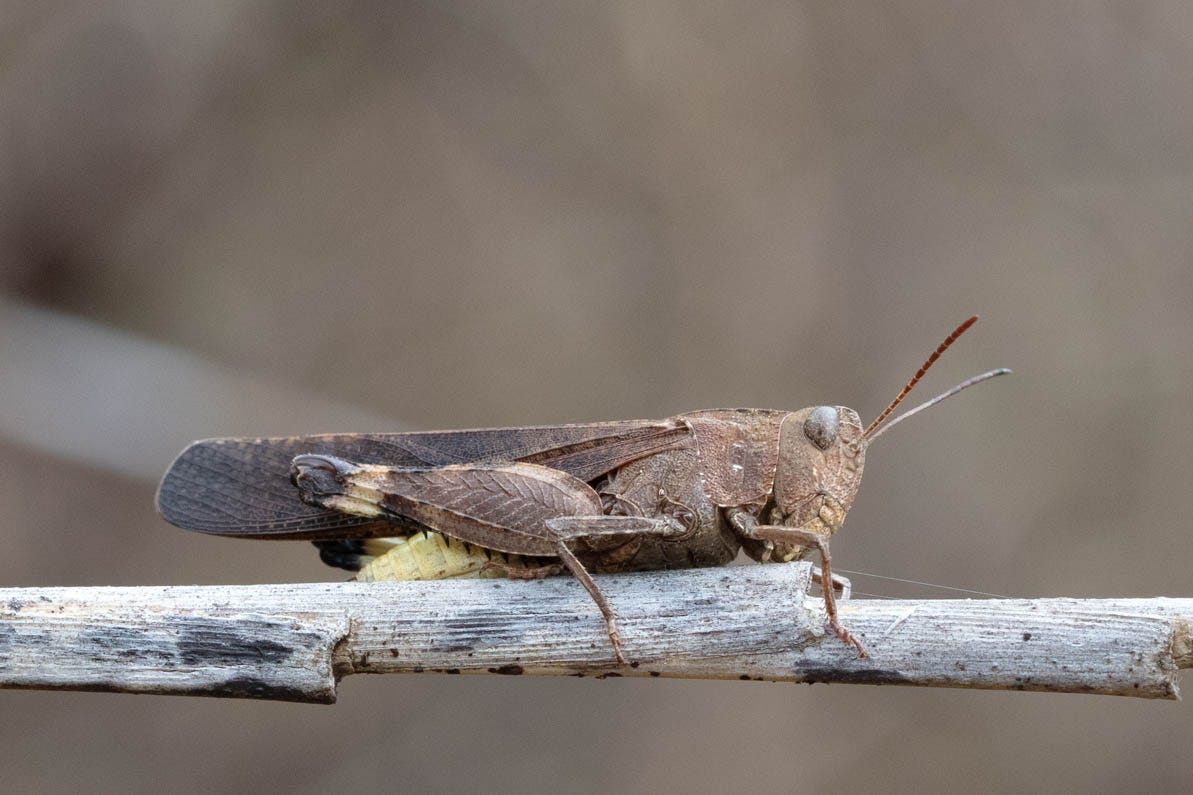
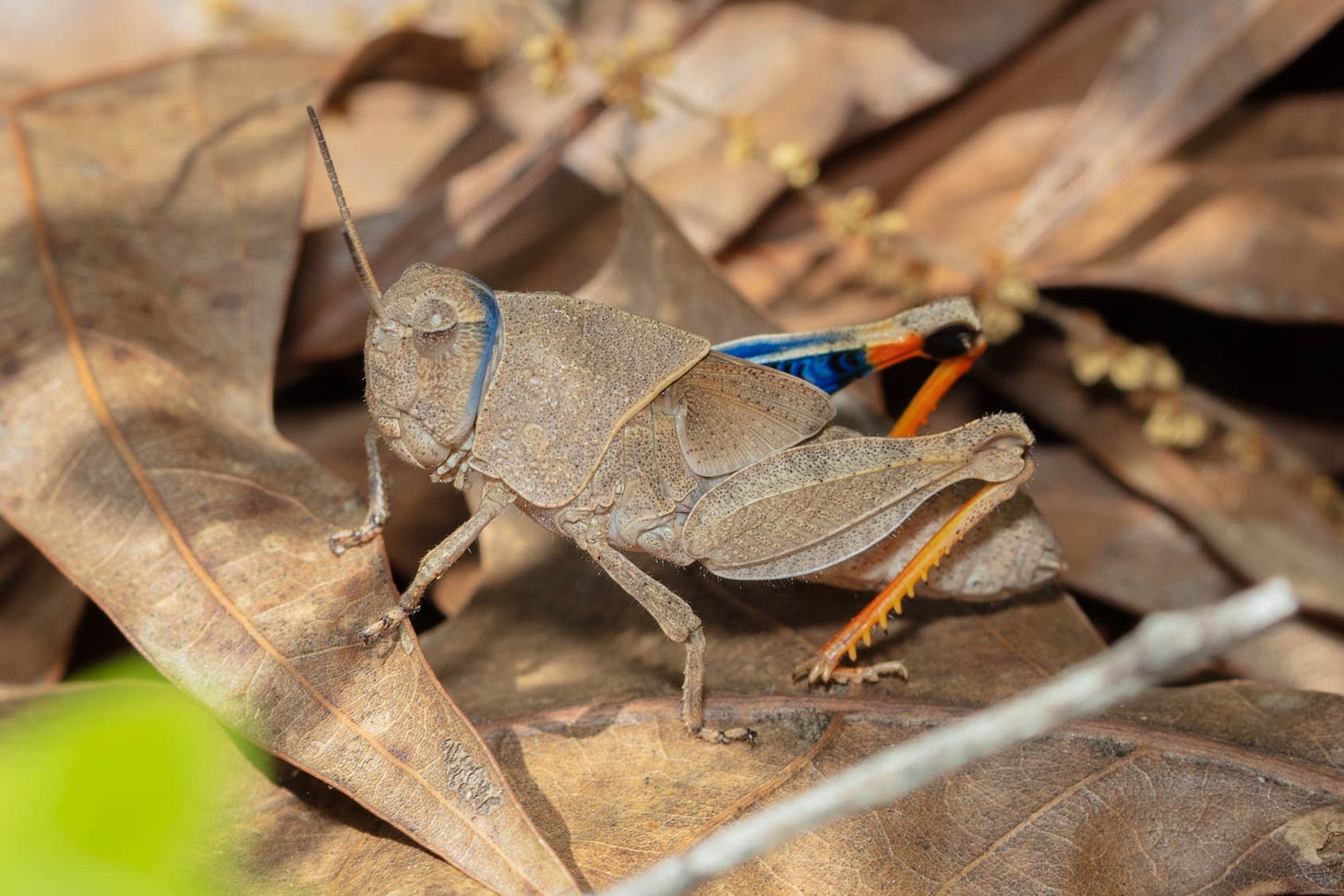
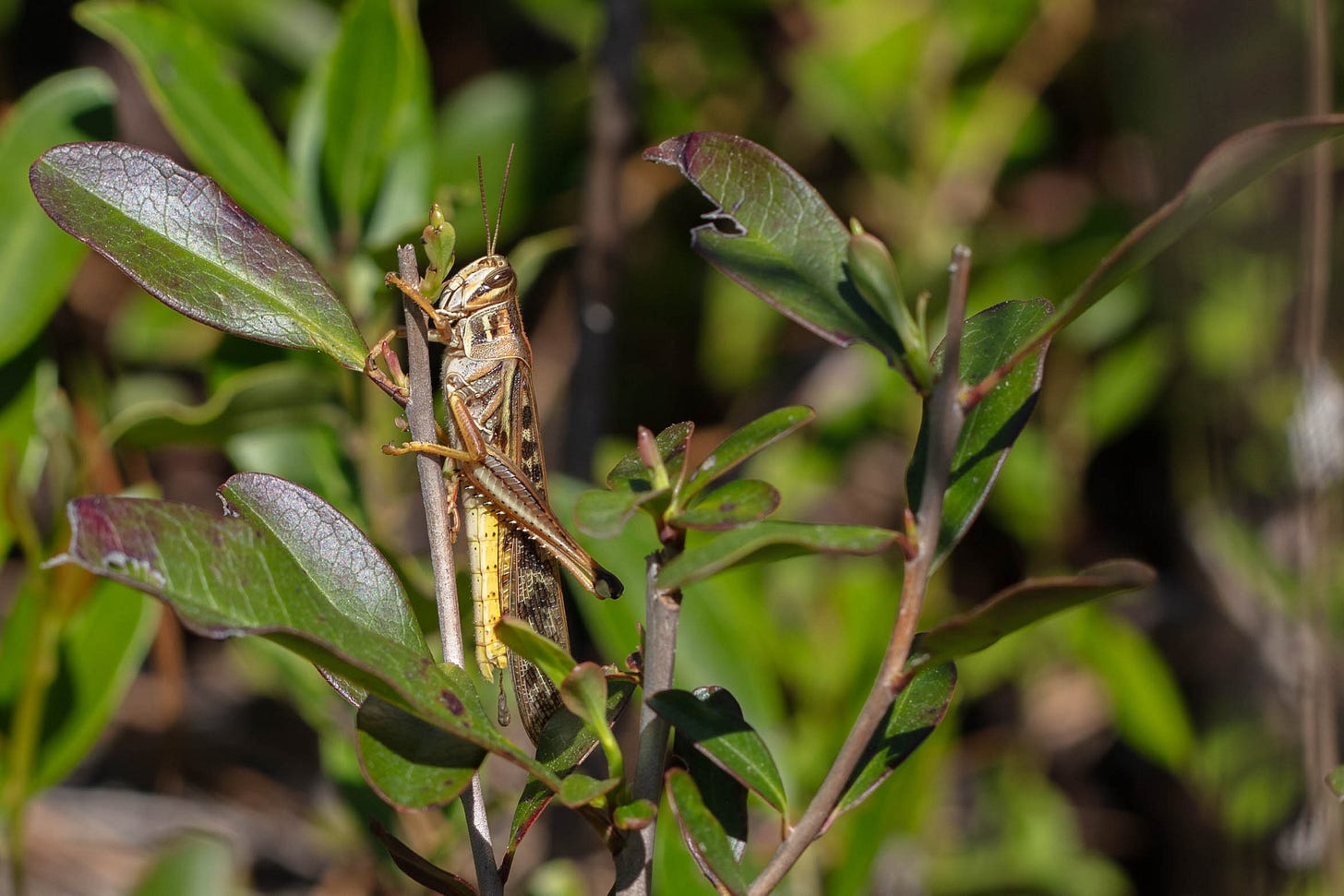
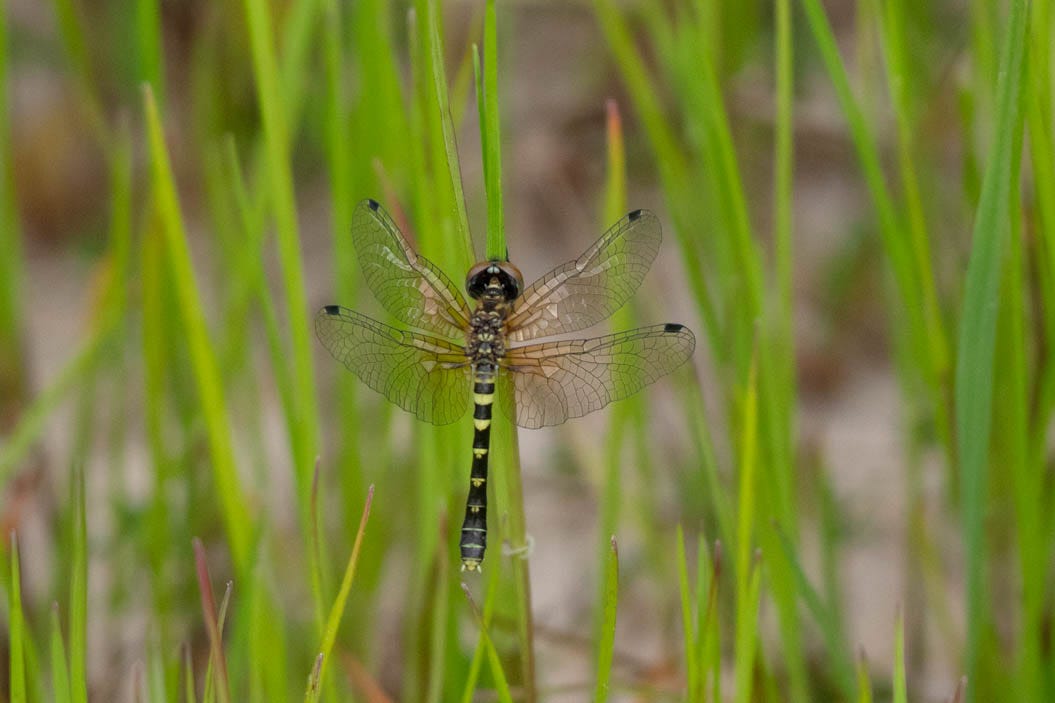
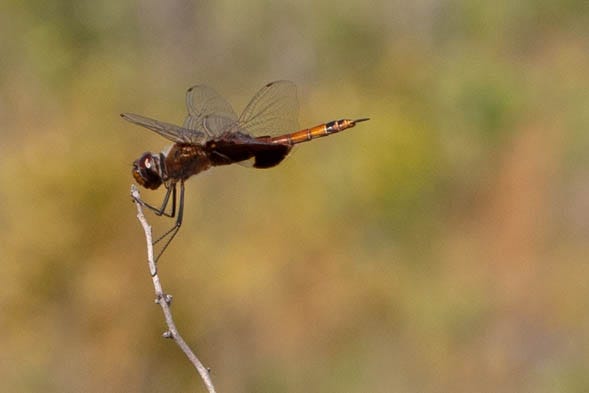
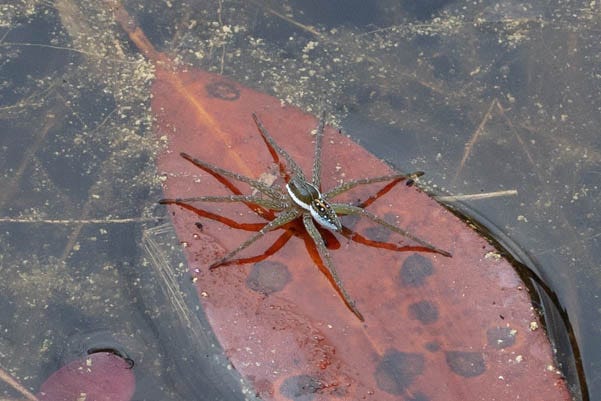
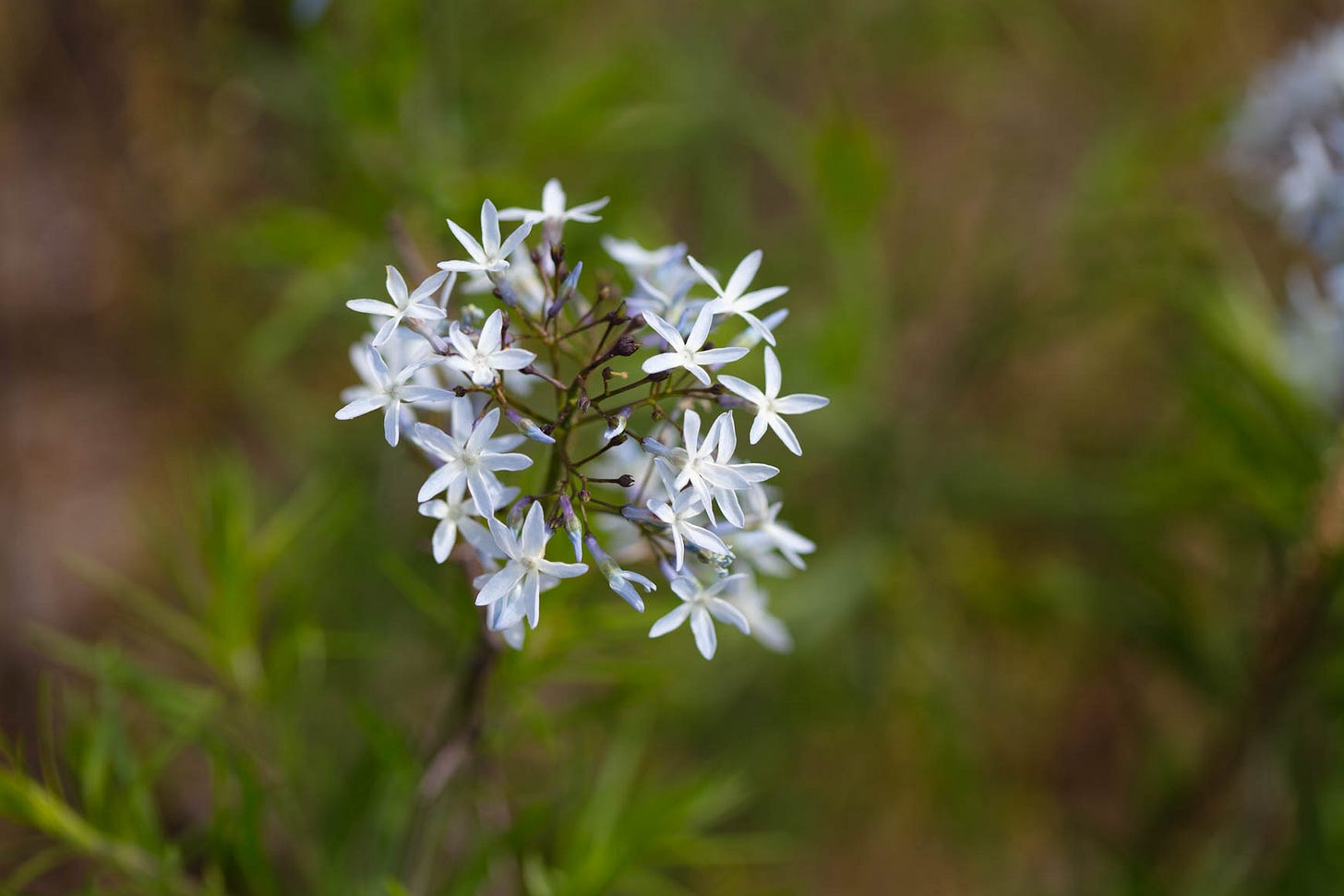


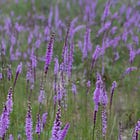
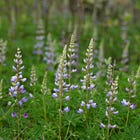
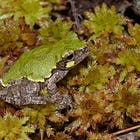
Those bits of brilliance on the orange-winged grasshopper. Amazing! And now I'm wishing for a local botany group to join.
Wonderful photos!